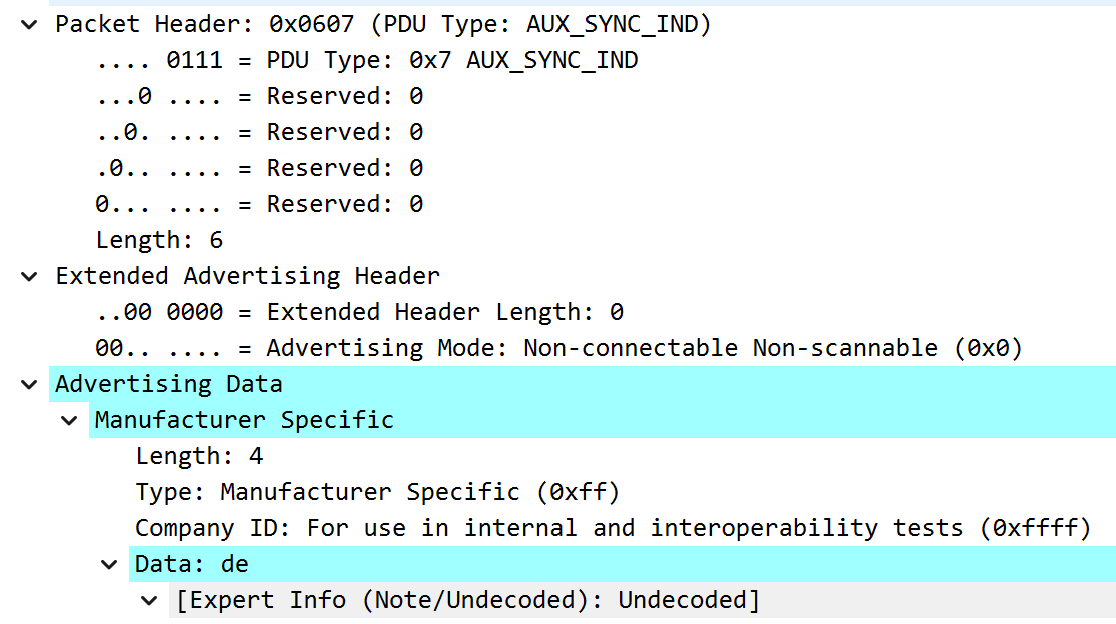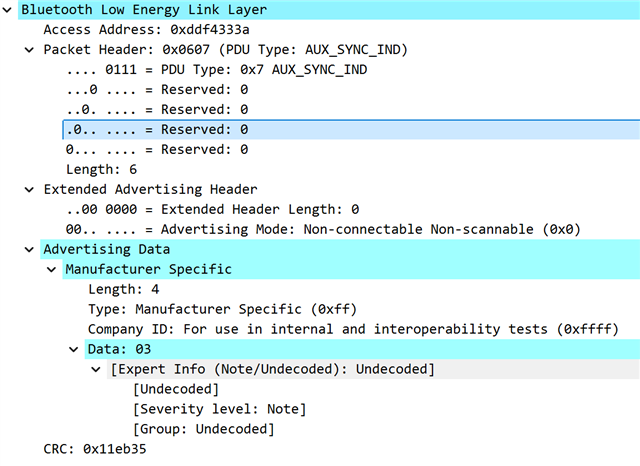Hi,
I am trying to understand periodic advertising and some basic questions:
I am using periodic_adv example from the NCS.
- I see teo ADV data defined in the file as shown below. How will this data be used ?

When I used wireshark I can see "TEST PERIODIC ADVERTISING" in AUX_ADV_IND packet, but should not the ADV data be in the AUX_SYNC_IND packets ?

The AUX_SYNC_IND packets shows ADV_DATA but I cannot match the data given in the code.

2. The periodic adv example keeps changing the ble address. How can I keep the address static-random which will not change ?
3. On wireshark, when I select the device, then I can only see the AUX_SYNC_IND packets. Why is this so ?






